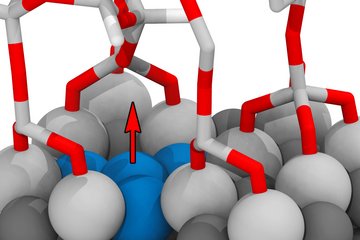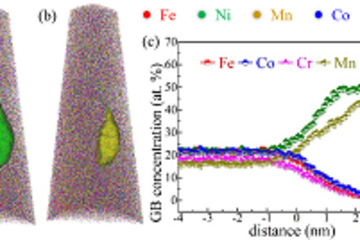All genres
1.
Journal Article
Characterisation of non-stoichiometric cementite (Fe3C). Calphad 68 (3), 101689 (2020)
2.
Journal Article
Thermodynamic modelling of crystalline unary phases. Physica Status Solidi B 251 (1), pp. 14 - 32 (2014)
3.
Journal Article
Carburisation of Fe–X (X=Si,Mo,V) diffusion couples. CALPHAD: Computer Coupling of Phase Diagrams and Thermochemistry 32, pp. 207 - 216 (2008)
4.
Journal Article
Investigations of MX and γ'/γ'' precipitates in the nickel-based superalloy 718 produced by electron beam melting. Materials Science and Engineering A 480, pp. 138 - 147 (2008)
5.
Journal Article
Observation of boron enrichments in a heat treated quasibinary hypoeutectic NiAl-HfB2 alloy by means of atom probe field-ion microscopy (APFIM). Surface and Interface Analysis 39, pp. 251 - 156 (2007)
6.
Journal Article
Microstructure and mechanical properties of Fe3Al-based alloys with strengthening boride precipitates. Intermetallics 15, pp. 1172 - 1182 (2007)
7.
Journal Article
Assessment of the Fe–Al–Ni system. Intermetallics 14 (10-11), pp. 1276 - 1290 (2006)
8.
Journal Article
Preparation of Ultramicroelectrode Array of Gold Hemispheres on Nanostructured NiAl-Re. J. Electrochem. Soc. 153 (1), pp. C33 - C36 (2006)
9.
Journal Article
Metal dusting of binary iron aluminium alloys at 600 °C. Materials and Corrosion 57, 9, pp. 724 - 728 (2006)
10.
Journal Article
Effect of the Growth Conditions on the Spatial Features of Re Nanowires Produced by Directional Solidification. Nano Letters 6 (4), pp. 794 - 799 (2006)
11.
Journal Article
Gold Nanostructures by Directional Solid-state Decomposition. Gold Bull 39, pp. 185 - 191 (2006)
12.
Journal Article
Mechanical properties of Fe–Al–M–C (M=Ti,V,Nb,Ta) alloys with strengthening carbides and Laves phase. Intermetallics 13 (12), pp. 1256 - 1262 (2005)
13.
Journal Article
Optimisation of precipitation for controlling recrystallisation of wrought Fe3Al based alloys. Intermetallics 13 (12), pp. 1296 - 1303 (2005)
14.
Journal Article
Microstructure and mechanical properties of Fe3Al-based Fe–Al–C alloys. Intermetallics 13 (12), pp. 1322 - 1331 (2005)
15.
Journal Article
The strengthening effect of (Ni, Fe)Al precipitates on the mechanical properties at high temperatures of ferritic Fe–Al–Ni–Cr alloys. Intermetallics 13 (12), pp. 1263 - 1268 (2005)
16.
Journal Article
Simulation of the kinetics of precipitation reactions in ferritic steels. Acta Materialia 53 (2), pp. 519 - 531 (2005)
17.
Journal Article
Precipitation of Cr-rich phases in a Ni-50Al-2Cr (at.%) alloy. Intermetallics 14, pp. 156 - 162 (2005)
18.
Journal Article
Fabrication of rhenium nanowires by selective etching of eutectic alloys. Electrochimica Acta 51 (5), pp. 795 - 801 (2005)
19.
Journal Article
Electrochemical Production of Nanopore Arrays into a Nickel Aluminium Alloy. Electrochimica Acta 50, pp. 3033 - 3039 (2005)
20.
Journal Article
Phase equilibria among α-Fe(Al,Cr,Ti), liquid and TiC and the formation of TiC in Fe3Al-based alloys. Acta Materialia 53 (14), pp. 3961 - 3970 (2005)











